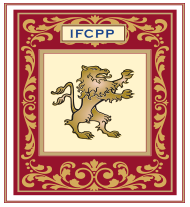Reposted from US Dept of State
The U.S. Department of State’s Cultural Heritage Center leads the United States cultural heritage diplomacy efforts through grants and exchanges that protect and preserve culture worldwide. Disrupting trafficking is an important part of these efforts. Last autumn we brought together in London global leaders in technology, law enforcement, and cultural heritage digital collections for the first-ever International Workshop on Technology Solutions to Disrupt Illicit Trafficking in Cultural Property. The goal was to further explore key strategies and tactics using emerging technologies to combat trafficking in art, antiquities, and other cultural objects. In particular, the international cohort of experts explored the potential for artificial intelligence (AI) to aid law enforcement, inform museum acquisition policies, and support academic research. Cultural property takes many forms, and a variety of laws control its movement. Customs officers and investigators rely on tools to quickly and accurately identify cultural objects – especially ones uncovered through illegal excavations or not yet inventoried. Cultural property trafficking is a serious transnational crime requiring collaboration with global partners. It is linked to terrorist financing, transnational organized groups, money laundering, smuggling, and counterfeiting.
Cultural property trafficking deprives communities of their history and identity, erodes the legal art market, and harms our public institutions. We organized the workshop on behalf of the Cultural Heritage Coordinating Committee, a federal inter-agency group that works together to protect and preserve international cultural property at risk from political instability, armed conflict, or natural or other disasters. The workshop’s 60 participants included law enforcement and cultural representatives from INTERPOL, Europol, and the governments of Brazil, France, Poland, Spain, and the United Kingdom. We also hosted technology firms Google Arts & Culture, Art Recognition, Artrendex LLC, Fraunhofer Institute SIT, and Truepic. We were also honored to include personnel from the Metropolitan Museum of Art, the British Museum, and the Prussian Cultural Heritage Foundation, and scholars from the American Center of Research, the UK’s Archaeology Data Service, Open Context, and the University of Pennsylvania’s Penn Cultural Heritage Center. The U.S. government was represented by the Department of State, Homeland Security Investigations, Customs and Border Protection, the Federal Bureau of Investigation, the Smithsonian Institution, and the U.S. Army.
See Original Post
